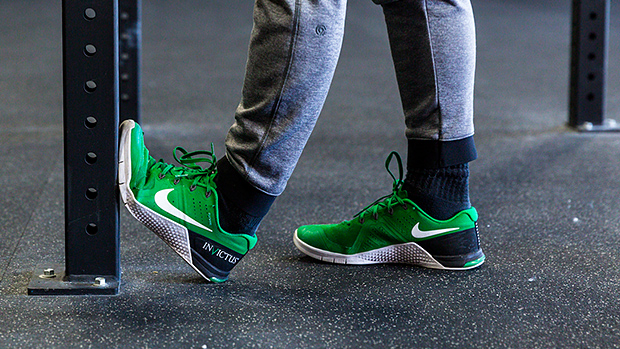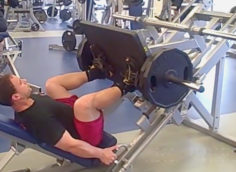No one would get excited about "foot and ankle day" at the gym. But if you live on a planet with gravity, then you need those feet and ankles to move well. If your ankles don't move well in three-dimensions then everything up the kinetic chain – from your knees to your neck – could be compromised.
Your feet have 26 bones, 33 joints, and over 100 muscles, tendons, and ligaments. There's a lot going on down there. And if all those parts aren't moving well then you could be in for a lot of problems.
As you run, jump, throw, and lift, you must disperse forces throughout the body. Each joint needs to do its share of the work so that no one region becomes overstressed.
Sometimes the forces travel from the bottom up – impact from running and jumping for instance – or from the top down, such as any type of squat or lunge, whether bilateral or unilateral. All your joints should be able to move in three dimensions: front/back (sagittal plane), side-to-side (frontal plane), and rotation (transverse plane). If you lack adequate tri-plane ankle motion then excess motion and force are imposed on nearby joints.
Anyone who's experienced ankle sprains may have poor ankle mobility, even if the injury occurred long ago. Even if you've never sprained an ankle, it's likely that our modern lifestyle and shoe choices may limit ankle mobility. Here are some problems related to limited tri-plane ankle motion:
- Inadequate ankle dorsiflexion will compromise your squat depth. (Dorsiflexion occurs when you pull your toes up toward your shin.) If your shin can't tilt forward enough then you may flex excessively at the hips and/or spine in an effort to get to the depth you want. That may mean back pain and/or a weak squat position. One solution is to wear weightlifting shoes. The raised heel reduces the demand for dorsiflexion when squatting. But I argue that you should fix yourself. Why not have a fully functioning body?
- Do your knees hurt when walking down stairs or running/hiking downhill? Does your rear-leg knee hurt when doing a forward lunge? Check that dorsiflexion. If the ankle of the rear leg can't dorsiflex enough, excess stress is transferred to the knee when you step down.
- Do you swing a bat, club, racquet, or stick? Do you throw punches or run? Then your ankles need to tilt and rotate a lot. Without good transverse and frontal plane ankle movement your problems could cause pain in the knees, hips, back, shoulders, or even the neck.
Frontal and transverse plane ankle motion is overlooked with most ankle mobility drills and calf stretches. Here's how to regain all these abilities.
Flexed-Knee 3-Way Ankle Mobility Matrix
Straight Leg 3-Way Ankle Mobility Matrix
Ideally, do them throughout the day. Much like practicing anything from the Olympic lifts to the violin, the more often you practice, the faster you'll make progress.
It's easy to roll these into your pre-workout and warm-up routine. Do them before a lifting session or before a game. Between sets is also a great time to do some mobility work. For instance, after a set of bench press, go mobilize your ankles. You can do what you like to do and what you NEED to do at the same time.
You should gain some new range of motion by doing the drills. Now it's crucial to coordinate that new mobility into the complex, multi-joint movements used in real life. There are many options, but here's one way to tweak the squat to emphasize ankle mobility:
Staggered-Stance Squat
An ideal time for this exercise is during your warm-up for your regular squat workout. Accumulate some reps as you progress up to your working weight. Or you could do the staggered squat while resting between sets of another exercise. You could also use this squat during a deload week. Don't expect to squat as much as you do in a conventional squat stance.
You may want to start with short-range, slow, unloaded movements. You can add range, speed, and/or weight as you get familiar with the exercise. Make sure you're staying in control. Don't let the exercise control you. If you're not in control of your limbs in space then pain or injury is likely.
The ability for the ankles to move and manage forces in three dimensions is crucial for powerful movement. Remember, restricted ankle movement contributes to pain and poor joint mechanics all along the kinetic chain. So mobilize the ankles into all three planes.
It may not be exciting, but it's important and it's easy to give your ankles some love in just a few minutes.





